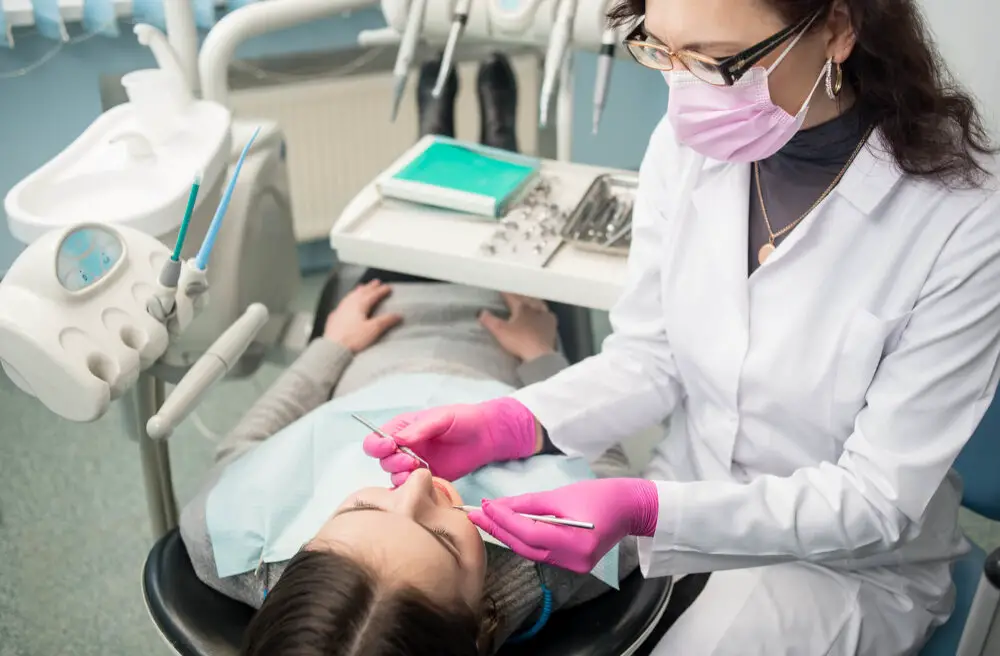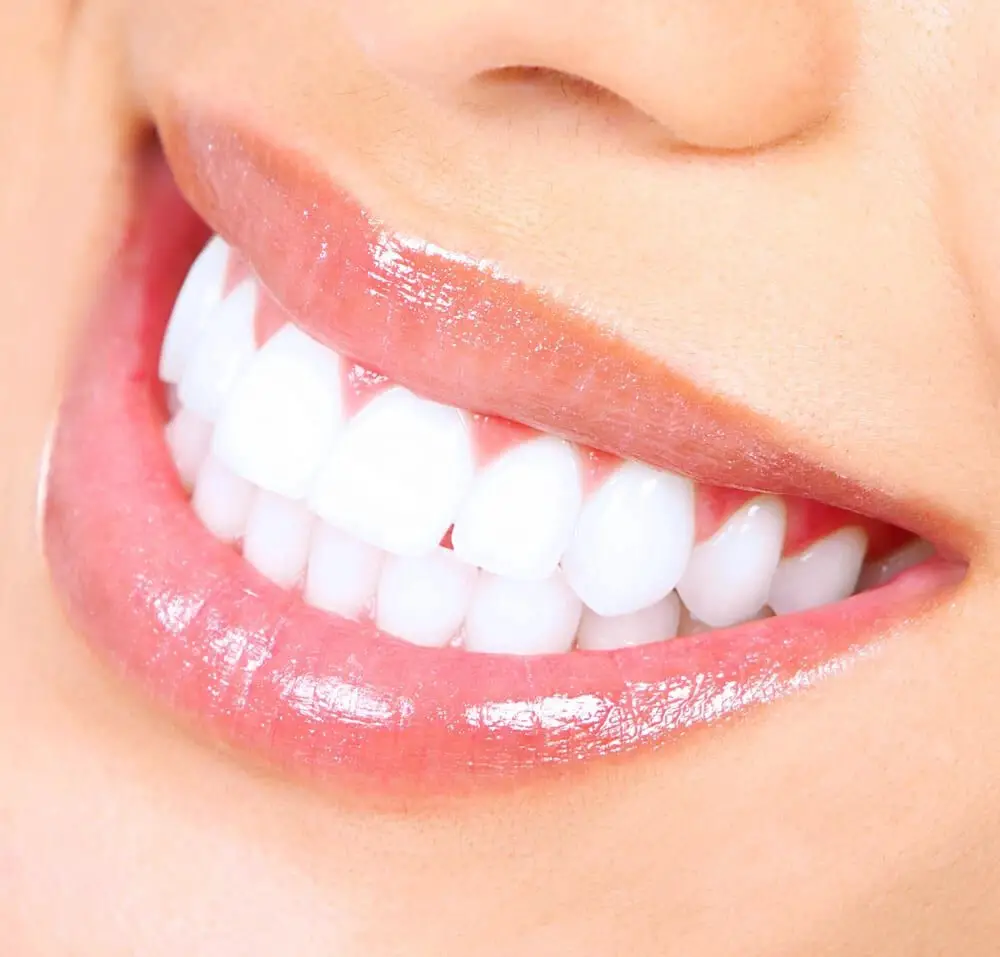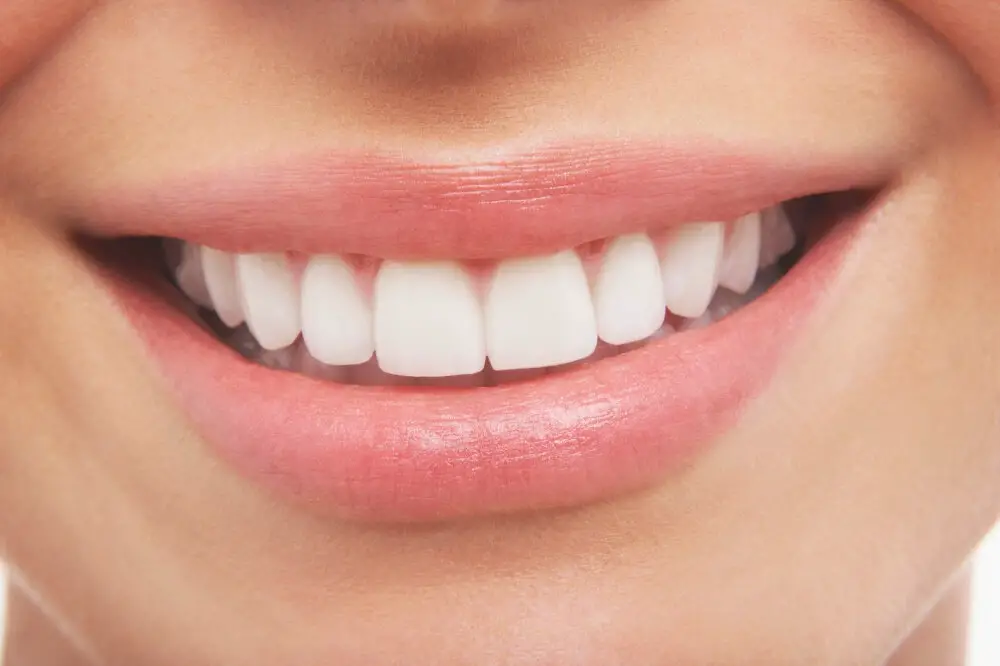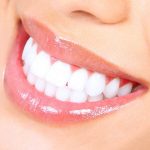Unveiling the Secrets of the Deceased: What Teeth Reveal About Their Life

The human body is a fascinating entity that holds many mysteries, including the secrets of a person’s life. While many of these secrets may be lost to time, one part of the body that can reveal a wealth of information about a person’s past is their teeth. Teeth can provide insight into a person’s diet, lifestyle, and even their cause of death. By examining the teeth of the deceased, we can unlock clues about their life that may have otherwise been lost to history. For centuries, scientists and archaeologists have been studying teeth to learn more about the people who once owned them. From the ancient Egyptians to modern-day forensic investigators, the study of dental remains has played a key role in understanding human history. By analyzing the teeth of ancient civilizations, researchers have been able to gain insights into their diet, health, and even their social structure. In more recent times, dental forensics has become a crucial tool in identifying victims of crimes and disasters, as well as in providing evidence in criminal investigations. The study of teeth is truly a fascinating and essential field that has the potential to reveal a great deal about our past and present.
Teeth are an essential and valuable source of information for anthropologists and forensic scientists, providing valuable insights into a person’s age, diet, health, and ancestry. In anthropology, the study of teeth can help determine the evolutionary history of a species and the migration patterns of humans. Additionally, the analysis of dental remains can reveal information about the cultural practices of a society, such as dental modifications or tooth extraction rituals. In forensic science, dental evidence can be used to identify unknown individuals, determine the cause of death, and provide evidence in criminal investigations. Overall, the study of teeth is crucial in understanding the lives of past and present individuals and populations.
The article \Unveiling the Secrets of the Deceased: What Teeth Reveal About Their Life\ explores the various ways in which teeth provide valuable information about an individual’s life, even after their death. The article delves into the fields of archaeology and forensic science, where teeth examination is used to determine an individual’s age, sex, and even their cause of death. The article also discusses how teeth can provide insight into an individual’s diet and health during their lifetime, as well as their socioeconomic status. Through the examination of teeth, scientists and researchers can piece together a more comprehensive understanding of an individual’s life and the society they lived in.
The Composition and Structure of Teeth

Teeth are one of the most resilient and durable structures in the human body. They are composed of several different layers, each with its unique properties and functions. The outermost layer of teeth is called enamel, which is the hardest substance in the human body. Enamel protects the inner layers of teeth from damage and decay caused by bacteria and other harmful substances. Beneath the enamel is a layer of dentin, which is softer and more porous than enamel. Dentin contains tiny tubes that connect to the nerves and blood vessels of the tooth’s pulp. The innermost layer of teeth is the pulp, which contains nerves, blood vessels, and connective tissues that nourish and support the tooth. The structure of teeth varies depending on their location in the mouth and their function. For example, incisors, which are located at the front of the mouth, are sharp and flat for biting and cutting food. Canines, which are located next to the incisors, are longer and pointed for tearing and shredding food. Premolars and molars, which are located in the back of the mouth, have multiple cusps and ridges for grinding and crushing food. The shape and size of teeth also vary among individuals and can provide clues about their age, diet, and health. By examining the composition and structure of teeth, scientists can gain insights into the lives of the deceased, including their nutrition, health, and socioeconomic status.
Teeth are intricate structures made of different layers, each with its own unique function. The outermost layer of the tooth is the enamel, which is the hardest and most mineralized tissue in the human body. It serves as a protective layer, shielding the tooth from external damage such as physical trauma and acid erosion. Beneath the enamel is the dentin, a softer layer that makes up most of the tooth’s structure. The dentin contains microscopic tubules that transmit sensations, such as hot and cold, to the tooth’s nerve. The innermost layer of the tooth is the pulp, which contains blood vessels and nerves that nourish the tooth and provide sensation. Understanding the different layers of teeth is crucial for forensic scientists and anthropologists as they examine teeth to reveal information about a deceased individual’s life.
The study of the composition and structure of teeth can provide valuable insights into an individual’s life. Teeth preserve a record of an individual’s diet, health, and even geographic origin. By analyzing the isotopes in tooth enamel, researchers can determine what a person ate, where they lived, and even if they migrated during their lifetime. The presence of dental caries, abscesses, and other dental pathologies can reveal information about a person’s health and the medical treatments they received. Additionally, the wear patterns on teeth can provide clues about an individual’s occupation or habits, such as nail-biting or pipe-smoking. Overall, teeth are a valuable tool for researchers seeking to understand the lives of individuals from the past, and their study can shed light on everything from ancient diets to the spread of disease.
Dental Diseases and Health

Dental diseases and health play a crucial role in determining the overall health and well-being of an individual. It is a well-known fact that dental problems can lead to a host of other health issues such as heart disease, diabetes, and even cancer. The health of our teeth and gums is directly linked to our diet, lifestyle, and hygiene practices. Poor dental hygiene practices can lead to tooth decay, gum disease, and even tooth loss. These conditions can be not only painful and uncomfortable but also have a significant impact on our self-esteem and confidence. Therefore, it is essential to maintain good dental health by brushing twice daily, flossing regularly, and visiting the dentist for routine checkups and cleanings. In the field of forensic science, dental diseases and health can provide valuable insights into the life of an individual. Dental records can be used to identify a person, as every individual has a unique set of teeth. Dental records can also reveal information about an individual’s diet, lifestyle, and hygiene practices. For instance, an individual with extensive tooth decay may have had poor oral hygiene or consumed a diet high in sugar and carbohydrates. Similarly, the presence of gum disease can indicate a history of smoking or poor nutrition. Therefore, dental diseases and health can unveil the secrets of the deceased and provide valuable information to forensic scientists, historians, and anthropologists.
Oral health is an essential aspect of our overall well-being, and dental diseases and conditions are prevalent among individuals of all ages. The most common dental issues include tooth decay, gum disease, periodontitis, and enamel erosion. Tooth decay is caused by the buildup of plaque on our teeth, which produces acids that damage the enamel. Gum disease is a chronic inflammation of the gums caused by bacteria, and periodontitis is a severe form of gum disease that can lead to tooth loss. Enamel erosion occurs when the protective layer of our teeth wears down due to acidic foods and drinks. It is crucial to maintain good oral hygiene and visit a dentist regularly to prevent and treat these dental problems.
Dental diseases can provide a wealth of information about a person’s lifestyle and diet. For example, tooth decay can indicate a diet high in sugar and carbohydrates, while gum disease may suggest poor oral hygiene habits. Additionally, the presence of dental wear and tear can reveal an individual’s occupation or cultural practices, such as chewing betel nut or using their teeth as tools. The study of dental diseases in ancient populations has provided insights into the dietary and lifestyle habits of past civilizations, shedding light on their social and economic practices. Overall, the examination of dental health can serve as a valuable tool for understanding the lives of individuals and communities throughout history.
Dental Wear and Tear

Dental wear and tear is a critical indicator of an individual’s lifestyle and habits. Teeth can reveal a lot about a person’s dietary habits, occupation, and even their age. When a person chews, bites, or grinds their teeth, it slowly wears down the enamel surface, leading to small grooves or pits. The extent and pattern of these wear marks can provide valuable information about the person’s diet and chewing habits. For instance, people who eat tough and fibrous foods have distinct wear patterns compared to those who consume softer and processed foods. Additionally, dental wear can also reveal information about an individual’s occupation, such as musicians who play wind instruments or factory workers who use their teeth as tools. Overall, dental wear and tear can be a fascinating insight into a person’s lifestyle and habits. However, dental wear and tear is not just a historical curiosity. It can also have serious implications for a person’s dental health. When teeth wear down, the underlying dentin can be exposed, leading to sensitivity, pain, and even decay. Additionally, worn teeth are more prone to cracking or breaking, which can result in further damage to the tooth or even tooth loss. Therefore, it is important to take care of your teeth and avoid habits that can cause excessive wear, such as grinding or clenching. Regular dental checkups can also help catch any signs of wear early and prevent further damage. In conclusion, dental wear and tear can provide valuable information about a person’s life, but it is essential to maintain healthy teeth to avoid any adverse effects on dental health.
Teeth are a valuable source of information when it comes to understanding the occupation and daily activities of an individual. For example, the wear patterns on teeth can reveal whether a person frequently chewed on tough, fibrous material, such as animal hides, indicating a possible occupation in leatherworking or textile production. Similarly, the presence of tooth decay and cavities can be indicative of a diet high in sugar and carbohydrates, potentially pointing to an occupation in baking or confectionery. Additionally, examining the shape and size of teeth can provide insight into the types of food an individual consumed, as well as their age and gender. Overall, teeth offer a unique glimpse into an individual’s life and can provide valuable information for researchers studying past populations.
The study of dental wear and tear has been instrumental in learning about the eating habits and lifestyles of ancient civilizations. For example, researchers have found evidence of a high-carbohydrate diet in the worn teeth of the ancient Maya, who relied heavily on maize as a staple food. Similarly, the teeth of ancient Egyptians have shown signs of abrasion from the use of primitive toothpaste made from crushed eggshells and pumice. Dental analysis has also helped to shed light on the dietary habits of prehistoric humans, revealing that they consumed a wide variety of plants and animals, and suggesting that their diets were more diverse than previously thought. Overall, the study of dental wear and tear provides valuable insights into the lives of our ancestors, helping us to better understand their diets, lifestyles, and cultural practices.
Forensic Dentistry

Forensic dentistry, also known as forensic odontology, is the application of dental knowledge to legal investigations. It involves the examination and analysis of dental evidence, such as teeth, to identify victims of crime or mass disasters, establish the age and identity of a person, and provide evidence in legal proceedings. Forensic dentists use their expertise in dental anatomy, pathology, and radiography to help solve cases and bring justice to victims and their families. The field of forensic dentistry has made significant advancements in recent years, thanks to new technologies and techniques. For example, dental records can now be digitized and stored in databases, making it easier to compare and match with unknown remains. Additionally, 3D imaging and computer-assisted software can reconstruct damaged or fragmented teeth, providing valuable information about a person’s dental history. Overall, forensic dentistry plays a critical role in identifying and investigating crimes and disasters, and its importance cannot be overstated.
Teeth are an incredibly valuable tool in forensic investigations as they provide vital information about a person’s life, including their age, nationality, and even medical history. Dental records can be used to identify a person, and the unique patterns and wear on teeth can help to establish a timeline of events leading up to their death. Bite marks on a victim can also be compared to the dental impressions of a suspect, offering crucial evidence in criminal investigations. Dental remains can also provide insight into a person’s diet and lifestyle, as well as any injuries or illnesses they may have experienced. Overall, teeth play a crucial role in uncovering the secrets of the deceased and helping to bring justice to those who have been wronged.
Dental records are an essential tool used in forensic dentistry to identify an individual’s remains. These records consist of detailed information about the individual’s dental health, including x-rays, dental charts, and impressions. Dental records are unique to each person and can provide valuable information on their age, gender, and medical history. In cases where other forms of identification are unavailable or insufficient, dental records can be used to establish the identity of a deceased person. Forensic odontologists use dental records to compare the victim’s teeth to the dental records of potential matches, and the process can be highly effective in identifying a person’s remains. Overall, dental records are a crucial aspect of forensic dentistry and play a vital role in identifying individuals who have passed away.
The study of teeth is vital in understanding an individual’s life and history. Teeth provide a wealth of information about a person’s age, diet, health, and even their geographic origin. Dental analysis can reveal whether a person had access to dental care, the type of work they did, and if they suffered from any chronic illnesses. In addition, teeth can give clues about a person’s cause of death, such as trauma or infection. By analyzing dental remains, researchers can reconstruct a person’s life and create a picture of their daily habits, cultural practices, and even their socioeconomic status. Therefore, the study of teeth is a crucial tool for understanding the lives of individuals from the past and present.
The study of teeth in anthropology and forensic science is of paramount importance as it provides a wealth of information about the individual’s life. Teeth can reveal an individual’s age, gender, diet, and even migration patterns. In anthropology, studying the teeth of ancient individuals can give insight into the evolution of human diet and behavior. Forensic scientists can use teeth to identify individuals, determine the cause of death, and even provide evidence in criminal investigations. Dental records are often the most reliable means of identifying individuals who have been missing or are victims of mass disasters. In conclusion, the significance of studying teeth in anthropology and forensic science cannot be overstated, as it provides valuable information about the past and present, and even helps solve crimes and bring closure to families.
Conclusion

In conclusion, teeth play an important role in unraveling the mysteries of a person’s life even after their death. The examination of teeth can provide valuable information about a person’s age, diet, health, and even cause of death. Dental remains have proven to be a valuable resource for scientists and historians when it comes to understanding past civilizations and cultures. The use of dental records in forensic investigations has also been instrumental in solving many criminal cases. As such, the study of teeth continues to be a fascinating and important field of research, offering a unique glimpse into the lives of the deceased.






